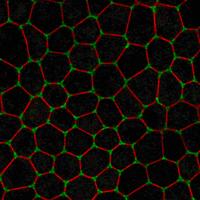Junction detection in biomedical micrographs
Spring 2014
Master Semester Project
Project: 00270

Biomedical images often contain micrograph structures, coming for instance from the interconnections between cells. The goal of this project is to develop a framework for the automatic detection of junctions in such biomedical micrographs. The specificity of that work is that we design steerable wavelets that have optimal angular selectivity, so as to provide both multi-scale detections and a good estimation of the orientation of the junction. The crucial part of the project is to be able to detect any kind of junctions with unknown angles.
During the internship, the student should (1) understand the steerable wavelet transform and its application to keypoint detection, (2) design new steerable wavelets, (3) develop a new optimization procedure to obtain the unknown parameters of the detection task, (4) apply the new detectors for image analysis and (5) test the algorithm on synthetic images and biomedical micrographs.
The project is adapted for a student interested to develop new mathematical ideas, and requires a familiarity with Fourier and wavelet analysis. Strong command of Matlab or Java are also necessary to connect the apply the theory to image analysis.
- Supervisors
- Zsuzsanna Puspöki, zsuzsanna.puspoki@epfl.ch, 021 693 51 57, BM 4.139
- Michael Unser, michael.unser@epfl.ch, 021 693 51 75, BM 4.136
- Julien Fageot